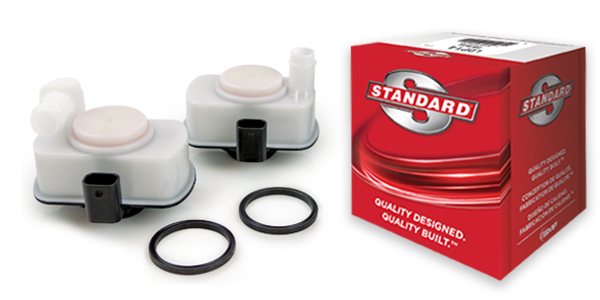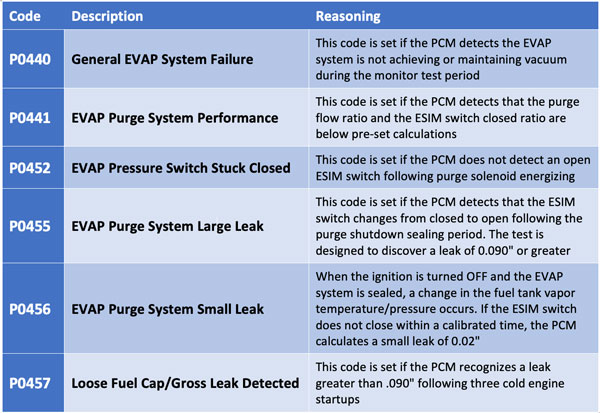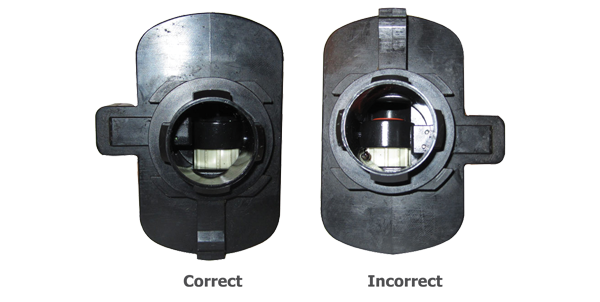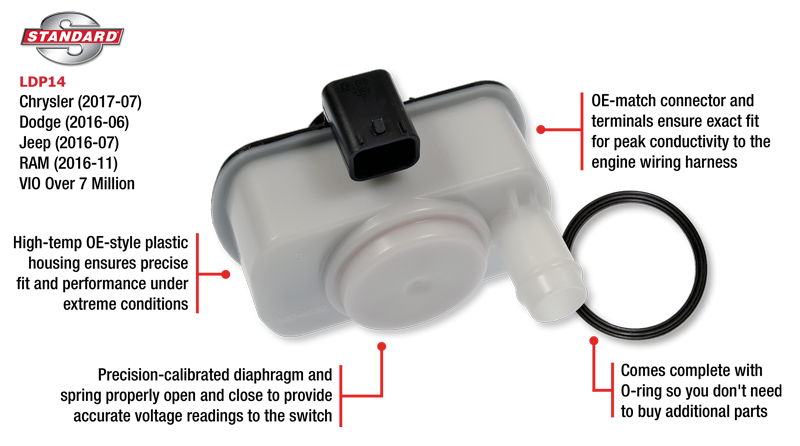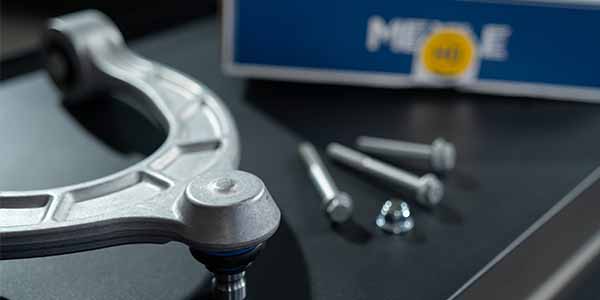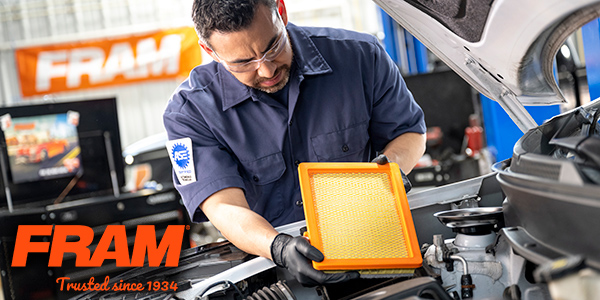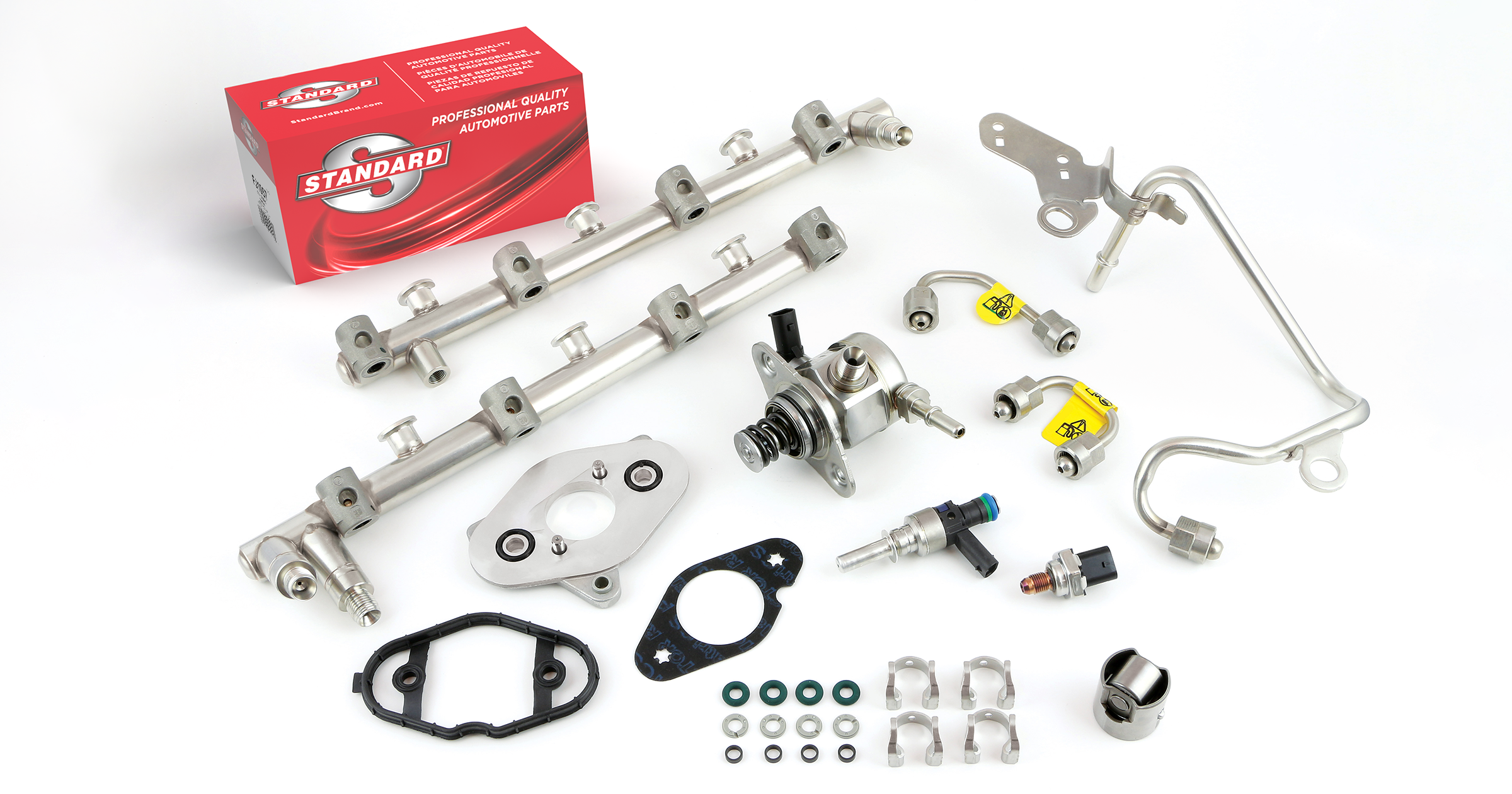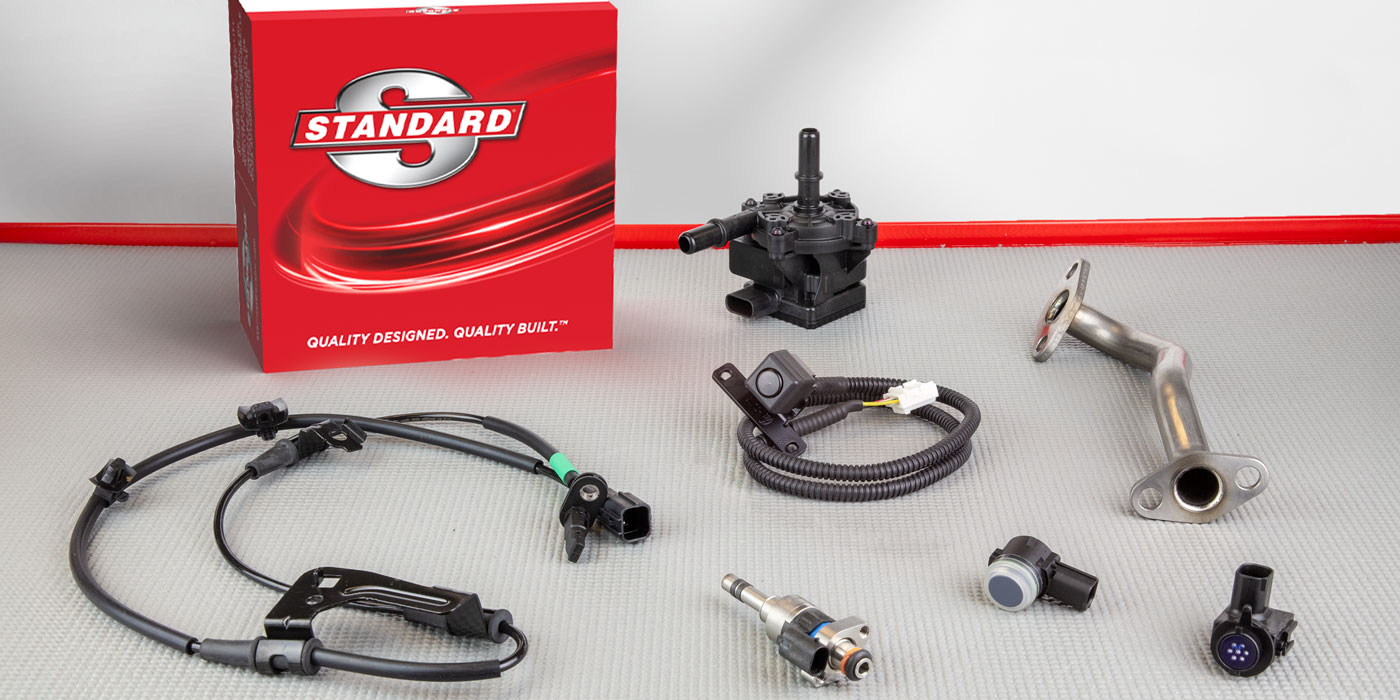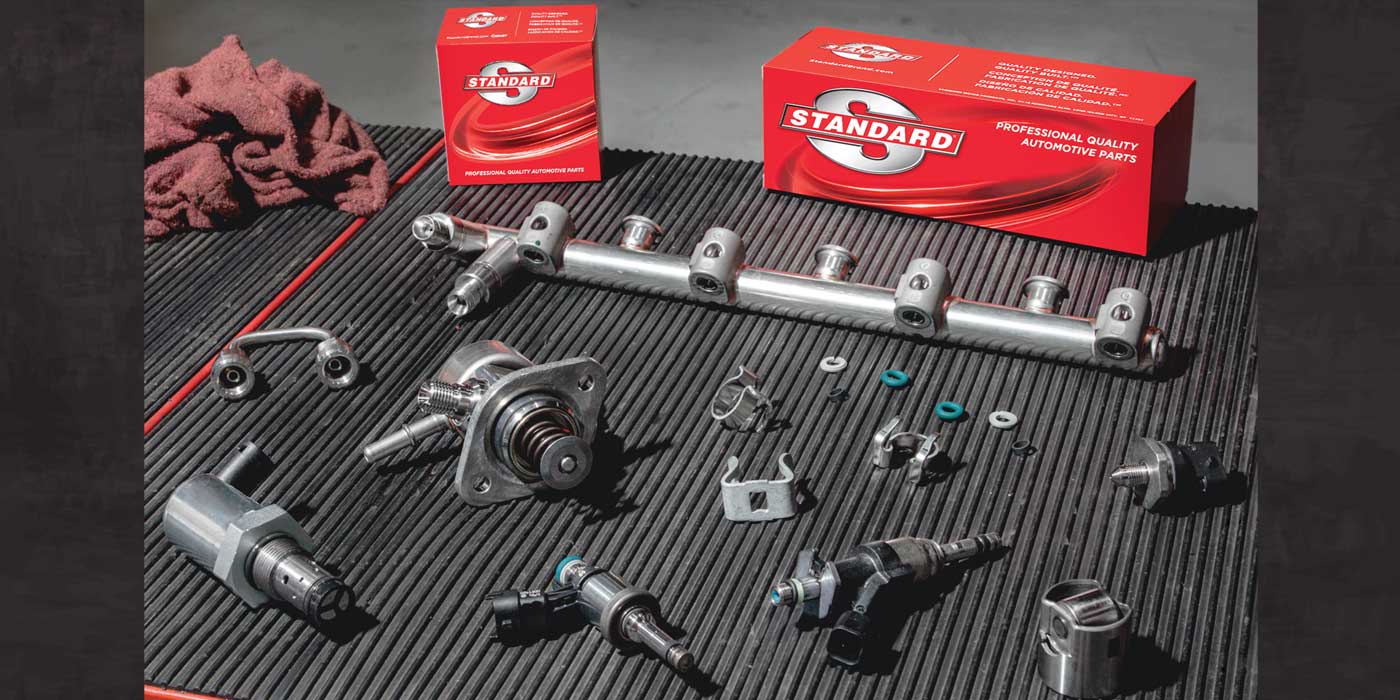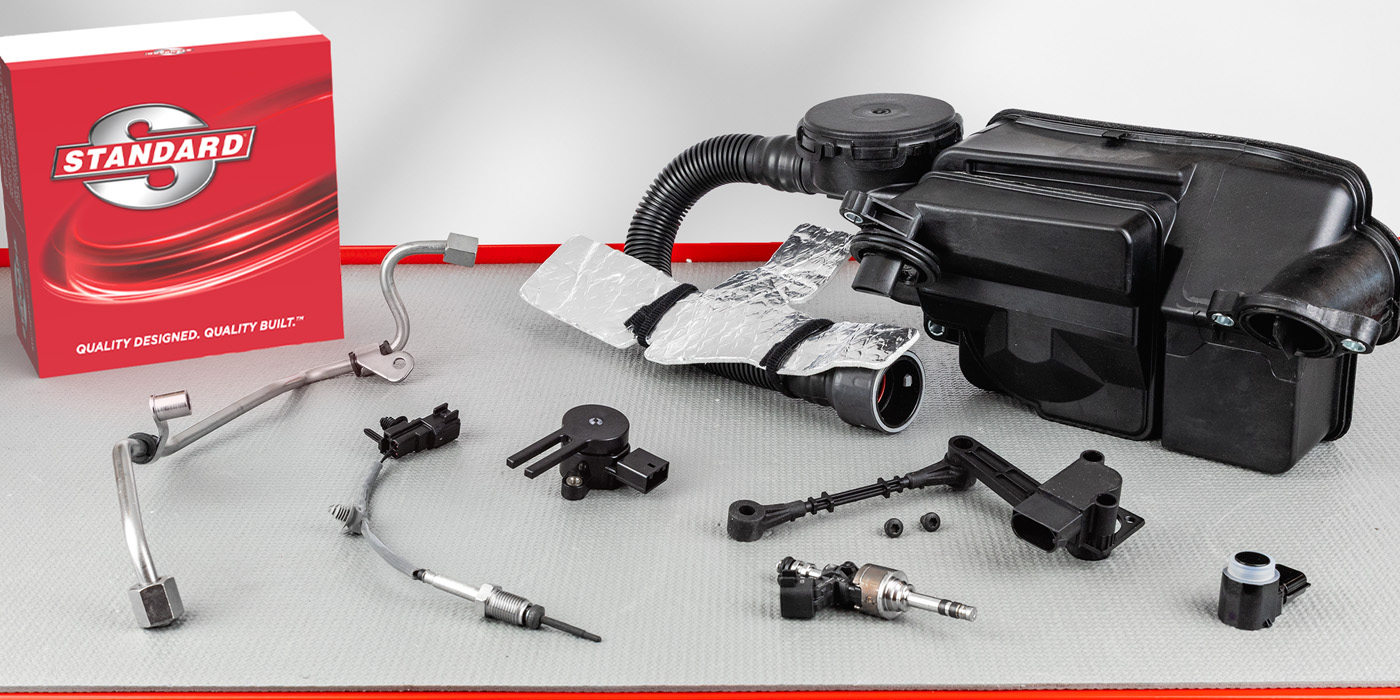Best practices for working on Chrysler ESIM systems
Chrysler Evaporative System Integrity Monitor (ESIM) have been used since the late 2000’s, but due to their unique characteristics they may provide some diagnostic challenges for technicians. Whereas many manufacturers rely on some form of a purge and seal/vacuum decay for their EVAP system self-tests, Chrysler has relied on some form of natural vacuum leak detection for several decades now.
The Chrysler ESIM is essentially a switch that closes when the vacuum in the tank exceeds a specific pressure (typically 1” H2O). Imagine the vehicle moving around and fuel sloshing around or sitting in the sun all day. After the vehicle is parked and the fuel begins to cool down, if the tank and the EVAP system are sealed, a vacuum should be drawn on the system. At this point the contacts in the ESIM will close and report back to the PCM that the system is sealed.
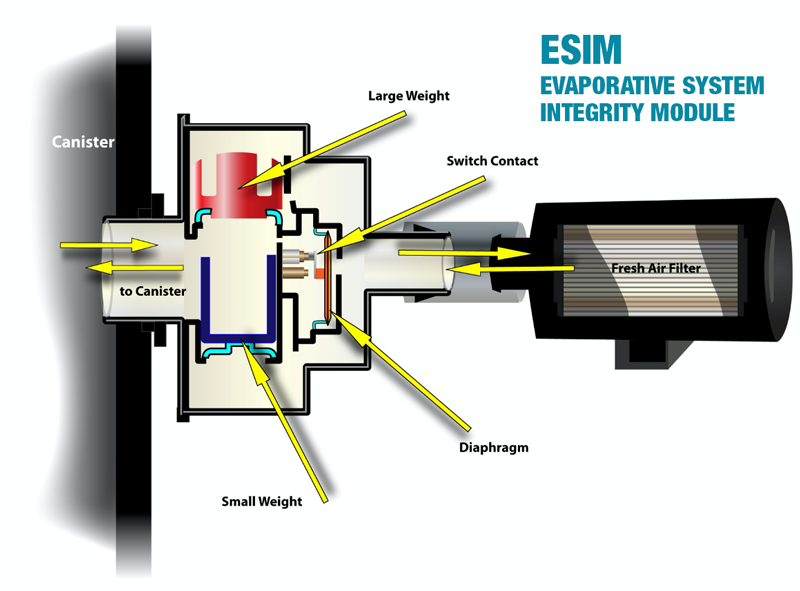
How the ESIM works
The PCM uses the ESIM in several conditions. First, when the vehicle is running, the EVAP system is pressurized due to natural vapor pressure. If the EVAP system is sealed, the pressure overcomes the spring tension in the diaphragm to close the contacts in the switch. When the switch closes, the PCM recognizes that the system is sealed and then passes the test.
Second, when the engine is shut off after running at operating temperature, the PCM performs a small leak test. As the engine cools, the EVAP system builds vacuum. The vacuum overcomes the spring tension in the diaphragm to close the contacts in the switch. In this condition, the PCM also recognizes that the system is sealed and passes the test. If the PCM doesn’t recognize the voltage change from the switch at the appropriate conditions, it will set one of several DTCs.
Common Trouble Codes
Tech Tip
On most Chryslers, the ESIM mounts directly to the canister, eliminating the need for a mounting bracket. The ESIM must be mounted vertically. On vehicles where the canister is mounted on an angle, the ESIM requires an adaptor to maintain a vertical position. Here’s a quick way to determine if the ESIM is installed correctly.
Premium Replacements for a Growing Category
The Evaporative System Integrity Module, also known as an Evaporative System Integrity Monitor or ESIM, is a key component of the EVAP System on many late model Chrysler, Dodge, Jeep, RAM Trucks, and Fiat vehicles. Unlike previous Leak Detection Systems, the ESIM does not contain a solenoid. Instead, the ESIM uses two weights, a diaphragm, and a switch to detect pressure differences across a variety of conditions. Standard® offers ESIM coverage for Chrysler, Dodge, Jeep, RAM Trucks, and Fiat applications.
Standard® offers more than 1,400 EVAP (Evaporative Emission Control System) components for import and domestic applications. Standard® engineers improve on OE flaws to deliver better performing, longer lasting EVAP components, and all Standard® EVAP parts are rigorously tested to ensure flawless operation. In addition to ESIM, the Standard® EVAP line includes canister purge valves, canister vent valves, fuel vapor canisters, canister vent solenoids, canister purge solenoids, leak detection pumps and more!
To learn more visit StandardEVAP.com and check out our EVAP Playlist!
This article was sponsored by Standard®

